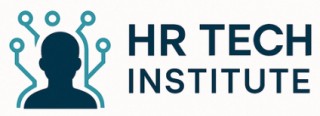
The Early Days of Applicant Tracking Systems
From Paper Trails to Digital Tracking
In the early days, applicant tracking systems (ATS) were quite different from the efficient, data-driven platforms we see today. Initially, these systems were designed to digitize the cumbersome task of managing resumes and applications. Recruiters were transitioning from paper-heavy processes to software that could manage the influx of candidates. Back then, the main focus was on simplifying the intricacies of the recruitment process by automating the organization of candidate information. The early ATS platforms primarily focused on storing resumes and basic applicant data. This was a significant shift for human resources, as it allowed hiring managers to easily search for candidates using simple criteria, reducing the time spent on manual resume sorting. Despite their limitations, these initial systems laid the groundwork for what was to come. As technology advanced, so did the capabilities of ATS solutions, integrating more sophisticated data management and tracking systems features, promising an enhanced candidate experience and refined talent acquisition strategies. For those interested in exploring how job openings can be efficiently managed and utilized, check out opportunities with Bluebird job openings. Reflecting on these early stages, it's evident that the journey of ATS solutions has been evolutionary, paving the way for the integration of technologies we see today in the realm of artificial intelligence and beyond.Technological Advancements and Integration
Integration of New Technological Features
The evolution of Applicant Tracking Systems, or ATS, has brought about significant technological advancements and complex integrations. This transformation has greatly enhanced the quality and efficiency of the recruitment process. With the advent of digitization, these systems have leveraged various innovations, including cloud computing and data-driven functionalities, to improve the entire hiring workflow from start to finish. Modern ATS platforms now provide recruiters with enhanced tools for handling large volumes of candidates, making the hiring process more efficient. This is achieved through resume parsing technologies that swiftly extract critical information from job seekers' resumes, reducing the time and effort invested in the initial candidate screenings. ATS solutions today come with integrated job boards, social media platforms, and other online channels, facilitating a broader and more targeted reach for job advertisements. These systems also provide centralized management of candidate data, streamlining collaboration between recruitment teams and hiring managers. Another pivotal advancement is the integration of various software and systems. This interoperability enables seamless communication and data sharing between different stakeholder systems, ultimately creating a more cohesive talent acquisition environment. As applicant tracking systems have evolved, they ensure improved user experience and offer customization options that cater to specific recruitment needs. In conclusion, the integration of advanced technologies in ATS platforms has resulted in a highly optimized recruitment and hiring process. By accommodating rapidly changing market demands and embracing technological advancements, ATS platforms continue to play a pivotal role in attracting and securing top talent efficiently and effectively.The Role of Artificial Intelligence in Modern ATS
The Influence of Artificial Intelligence in Applicant Tracking Systems
As recruitment technology has evolved, artificial intelligence (AI) has become a cornerstone in modern ATS platforms. This shift is enhancing the functionality and efficiency of recruitment processes, ensuring that the complex task of hiring is more streamlined and effective. The integration of AI into ATS solutions has revolutionized the way recruiters manage applicant data, interact with candidates, and make informed decisions in a time-efficient manner.
AI-driven features are instrumental in automating repetitive tasks, such as resume parsing and initial candidate screening. This not only accelerates the hiring process but also enhances the quality of the candidate experience by allowing recruiters to engage more personally with applicants. By leveraging intelligent algorithms, ATS platforms can analyze candidate information from various sources like social media and job boards, thus identifying potential candidates whose profiles align with job requirements more accurately.
A key aspect of AI in ATS systems is its ability to deliver data-driven insights. These insights can inform recruitment strategies by providing a comprehensive view of applicant pools and helping to predict the success rate of different hiring approaches. Such predictive analytics are invaluable for talent acquisition teams aiming to attract top talent efficiently.
Modern ATS solutions also cater to the increasing demand for personalized user experiences. AI facilitates this by enabling systems to suggest tailored interactions that resonate with individual candidates, enhancing their overall recruitment experience. This focus on user experience positions modern ATS systems as essential tools in recruitment tech stacks.
The role of AI in ATS platforms is undeniably transformative, pushing the boundaries of what traditional tracking systems were capable of. To explore more on the impact of such technological enhancements on team dynamics, visit the shining a light on team members page.
User Experience and Customization
Enhancing the Interaction Between Users and ATS
In today’s fast-paced recruitment landscape, user experience plays a transformative role in the effectiveness of applicant tracking systems (ATS). With the complexity of hiring processes and the variety of ats platforms available, the way systems ats engage with both candidates and recruiters has become a crucial factor in their success.
The ease at which candidates and hiring teams interact with the ats can significantly influence the overall recruitment process. Modern ats are designed with intuitive interfaces that reduce the time taken for key tasks such as resume parsing and candidate data management. This simplification not only improves recruiter efficiency but also enriches the candidate experience, making it easier for job seekers to navigate job boards and submit applications seamlessly.
Customization is another critical aspect of user experience within ats systems. By allowing recruiters to tailor dashboards and tracking systems to meet specific needs, ats solutions enable the adjustment of recruitment workflows in a way that supports talent acquisition strategies. This flexibility promotes a more organized and effective tracking system, allowing for data-driven decision-making that aligns with organizational goals.
Moreover, integration with social media platforms and other recruitment tools enrich the ats user experience, providing a centralized hub for recruiters to access a wide pool of top talent. Systematic improvements in ats platforms are driving a more cohesive and coordinated approach to the entire hiring process, from application to onboarding.
While technological advancements continue to enhance the functionality and user-friendliness of applicant tracking systems, challenges remain. Overcoming these limitations will be key to further improving the ats user experience, ultimately benefiting candidates, recruiters, and organizations alike in their talent acquisition endeavors.
Challenges and Limitations
Overcoming Current Limitations in ATS
Despite the groundbreaking advancements in applicant tracking systems, challenges persist. While modern ATS platforms have streamlined the recruitment process, allowing recruiters to manage tasks more efficiently, there are areas where these systems can still improve. One of the primary concerns is the issue of data management. Although data-driven approaches are revolutionizing talent acquisition, managing vast amounts of data effectively remains a daunting task. ATS solutions promise to simplify resume parsing and candidate data organization, yet recruiters often encounter inconsistencies and errors in these databases, leading to potential oversights in identifying top talent. Moreover, the hiring process can still suffer from a lack of personalization. Although candidate experience has become a focal point, the sheer mechanization of ATS driven engagements can lead to a depersonalized experience for job seekers. Despite sophisticated automation, ensuring a human touch is often challenging but necessary for improving overall user experience. Another challenge lies in the integration of social media platforms within ATS systems. While such integration can enhance recruitment strategies by reaching a broader pool of candidates, it also necessitates staying updated with changes in social media algorithms and trends to maintain effectiveness. This frequently requires dedicated resources and time. Furthermore, the reliance on artificial intelligence in recruitment processes poses its own set of challenges. Machine learning and AI, while enhancing efficiency, can sometimes introduce biases if not carefully monitored and managed. This highlights the need for ongoing evaluation and customization to ensure equitable recruitment practices across diverse candidate pools. Finally, although many ATS platforms promise enhanced functionality and customization, these features often entail significant investments. Smaller organizations might struggle with the cost implications, feeling locked out from accessing advanced systems that could otherwise transform their recruitment processes. Addressing these challenges would not only help organizations make the most of their ATS investment but also enhance their capability to attract and retain top talent more effectively.Future Trends in Applicant Tracking Systems
Emerging Innovations in the ATS Landscape
The landscape of applicant tracking systems (ATS) is continually evolving, pushing the boundaries of what's possible in the recruitment process. As organizations strive to attract and retain top talent, embracing new trends becomes paramount. Here are some key future trends shaping the development of ATS platforms:- Enhanced AI Capabilities: Artificial intelligence is revolutionizing how ATS systems function. More sophisticated AI-driven features, such as advanced resume parsing and predictive analytics, will improve the speed and accuracy of the candidate selection process. This tech not only streamlines recruitment but augments the candidate experience by offering personalized interactions.
- Increased Data-Driven Strategies: With the ever-growing volume of data generated, ATS solutions are increasingly adopting data-driven approaches to better understand recruitment dynamics. Leveraging data analytics helps recruiters make informed decisions, enhancing talent acquisition strategies by identifying trends and inefficiencies within the hiring process.
- Integration with Social Media and Job Boards: As the digital world becomes more interconnected, ATS systems are moving towards seamless integration with social media platforms and major job boards. This integration extends the reach of job postings and simplifies candidate tracking, making the hiring process more efficient and effective.
- Focus on User-Centric Design: Prioritizing user experience is essential for modern ATS platforms. The emphasis is on creating intuitive and customizable interfaces that cater to the diverse needs of recruiters. Enhancing user experience not only boosts efficiency but also ensures that recruiters and candidates alike have a positive interaction with the systems.
- Flexibility and Scalability: As businesses evolve, so must their recruitment processes. The future of ATS will see solutions that offer greater flexibility and scalability, allowing organizations to adapt to changing workforce needs without overhauling their existing systems. This adaptability is crucial for sustaining growth in an ever-dynamic market.












